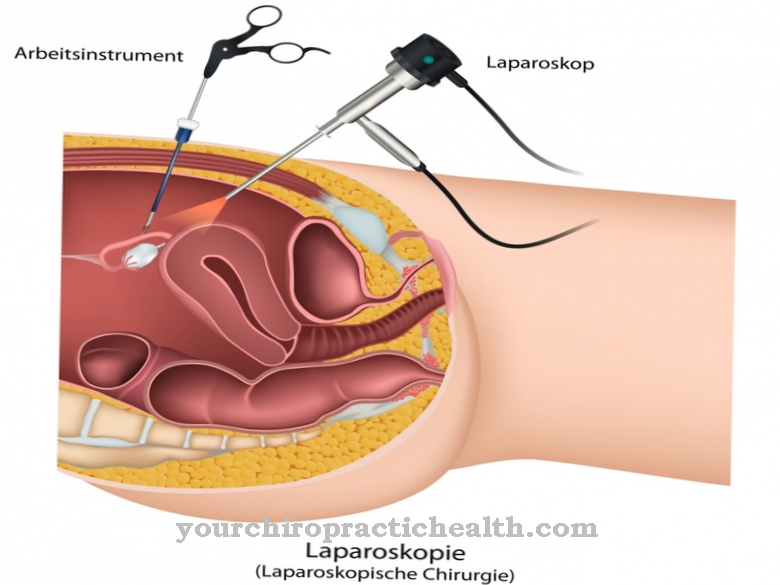In Germany there are a number of health resorts, which are often either by the sea or in the mountains. In general, a Cure Can be colloquially defined as vacation for health. There are different types of cures for different purposes.
What is the cure?

The term “spa” comes from the Latin word cura, which means care, care or care. In the vernacular, the term is also used as a synonym for rehabilitation measure. The expression means the strengthening of health or health care in the context of a stay in appropriate health resorts. Various remedies are used, most of which are site-specific. Cures serve to cure illnesses or as a supportive measure for weakened health. They can also serve as a kind of healing leave for mental health problems.
Often these are caused by trauma or, for example, deaths that could not be processed appropriately. As a rule, cures are associated with a change of location. This is related to getting the affected person out of their everyday life. In addition, health resorts are set up in agriculturally attractive areas, which usually offer various recreational opportunities. Spas have been visited since ancient times. Here, for example, sources were found that were said to have healing effects. Such places included areas around the Dead Sea or the Asklepieia.
A few examples of German health resorts in which there are spa operations and which have a rating approved by the German Spa Association are, for example, Aachen, Baden-Baden, Bernkastel-Kues, Isny im Allgäu and the North Sea islands of Langeoog and Borkum.
Function, effect & goals
Cure types are related to whether they are used for recovery, i.e. therapy or prevention. There are both inpatient and outpatient cures. For mild illnesses or as rehabilitation measures, outpatient cures are usually prescribed in which only the therapeutic measures in hospitals or health facilities are perceived. The situation is similar with outpatient preventive cures. In the meantime, inpatient cures paid for by the health insurance company are only prescribed in severe cases. This is the case, for example, after serious accidents or chronic illnesses. Before they can be approved, however, all outpatient options must have been exhausted.
Another type of cure is the mostly stationary father-mother-child cure. Depending on the case, only one parent can be involved. This is primarily about relieving overburdened parents and their psyche. The child is either looked after during therapy or included in the measures. Apart from the variants mentioned above, there are also day-care cures. A cure usually lasts three to four weeks, although the period can vary.
During the therapy there are different healing methods that are used. On the one hand, this includes, for example, physiotherapy, which works with heat, infrared and water applications. Massages by trained masseurs and physiotherapists are also included. On the other hand, there are also direct current or UV treatments. Physical therapy is mainly used for rehabilitation, relieves pain and heals tension or other impairments of this kind. The reasons for ailments to be treated are often stress and overload.
Other spa treatments are nutritional advice, psychotherapy or rehabilitation care. Depending on the reason for the cure, sports and exercise therapy can also take place. In a holistic framework, occupational therapy can also be carried out during the cure. This can relate to different areas and helps, among other things, to return the person concerned to everyday life after an accident.
You can find your medication here
➔ Medicines for relaxation and nerve strengtheningRisks, side effects & dangers
Not every health resort provides every treatment agent, which is why thorough research should be carried out before starting the treatment. Germany has over 300 health resorts, each of which specializes in certain healing methods. In addition, it is important to find out about the costs before starting a cure. A distinction must be made here between the actual treatments and the stay itself when it comes to the question of who actually pays for the treatment. Depending on the case, the cost bearers can be the trade association, accident insurance or pension and health insurance.
It depends on the type of treatment and the reason for the stay. In the meantime, those affected have to pay for a large part of the spa stay out of their own pocket. Every now and then they receive a grant, which can be the case for outpatient cures, for example. Based on the accommodation and meals, it is therefore possible to keep the costs as low as possible. A stay outside the spa facility is usually much cheaper. In the case of private cures, it is all the more important to find out in advance which funds are required for treatments and cure products. Information brochures from the health resorts can usually be found for this purpose. Another possibility is to call up the corresponding pages of the spa clinics online.
If the costs for a cure are to be covered, appropriate applications must be submitted to the responsible social insurance agency. This is always preceded by a visit to the doctor. A medical professional must determine the form of treatment. The application is submitted together with the doctor, who must have the appropriate qualifications himself. Various relevant documents must also be attached to the application.
The review of the application can take some time. It may be possible to submit the application to the medical service. This will examine him.This can certainly lead to an assessment of the professional competence. Therefore, the acceptance of the spa application often depends largely on the doctor to be treated and the professional aspects.

























.jpg)

.jpg)
